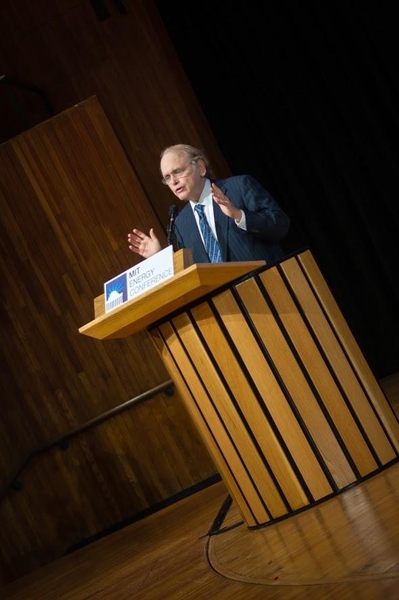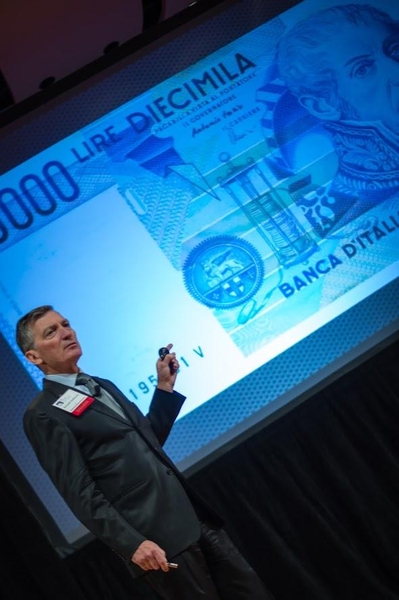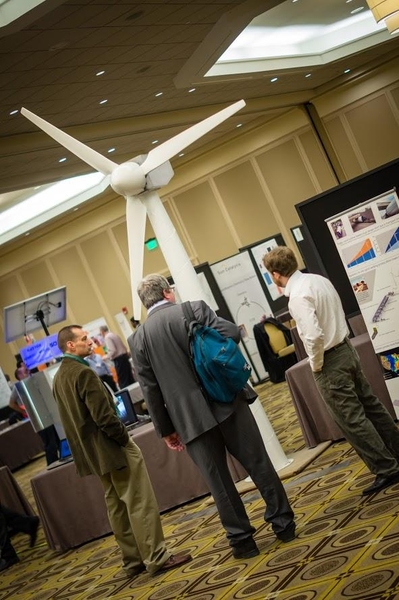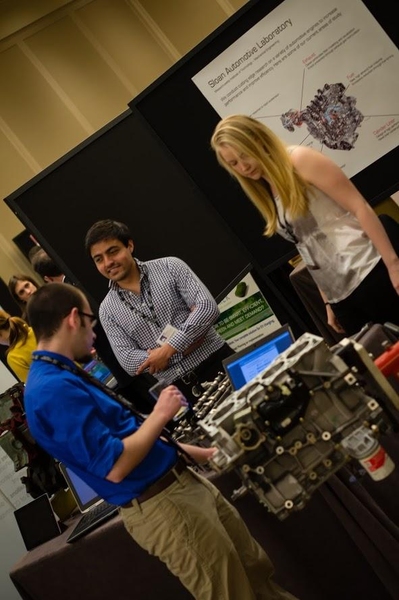The world’s energy infrastructure — with its massive generating plants, mines, refineries, electric grids, and gas stations — is often likened to an aircraft carrier: Trying to change its direction is a slow and difficult process. But at times, such changes can take place with surprising rapidity, as some speakers pointed out at this year’s MIT Energy Conference.
One stunning recent example, author Daniel Yergin said, has been the change in the natural gas industry with the twin technologies of horizontal drilling and hydraulic fracturing (commonly known as “fracking”). Just a few years ago, he pointed out, the assumption was that the United States was running out of natural gas and would need to begin importing the fuel. Now, instead, there are sufficient reserves not only to meet the nation’s own demands, but likely enough to begin significant exports.
Similarly, Yergin pointed out, new technologies for the extraction of shale oil have vastly increased estimates of U.S. oil reserves — so much so that the country could ultimately become a leading exporter of oil as well. New technologies in other areas of energy, he added, could trigger similarly unexpected changes in energy supplies and usage.
Yergin, the author of “The Quest: Energy, Security and the Remaking of the Modern World,” says that while many people think of climate change as the principal driver of changing energy use, that it is only one of several pressures that point in the same overall direction, including security, jobs, and economic growth. For example, he said, the availability of cheap natural gas has already begun to have a dramatic impact on the competitiveness of U.S. manufacturing.
However, this newfound abundance of natural gas could be both a blessing and a curse, as several speakers at the conference pointed out. Maria van der Hoeven, executive director of the International Energy Agency, said that while natural gas produces fewer greenhouse gas emissions than coal, it is still a contributor to global climate change.
“Let me be clear,” she said. “An expansion of gas alone is no panacea for climate change. Natural gas may be the cleanest fossil fuel, but it is still a fossil fuel.” Abundant cheap gas could actually undermine efforts to develop carbon-free energy sources, she said, prompting “a need for policies to defend truly low-carbon energy sources from the economic pressures of gas. These policies could take the form of a realistic price on carbon, for example, or — in the absence of such a carbon price — a policy mandate and strong public support of research, development, and deployment to foster technologies that can compete on their own.”
Despite the downsides of cheap gas, van der Hoeven finds encouragement in the recent expansion of renewable energy sources. “The current rapid growth of renewable power is a bright spot in the otherwise-bleak picture of global progress toward a cleaner and more diversified energy mix,” she said. Her agency’s projections show a 40 percent increase in renewable electricity production worldwide over the next five years, she said.
That growth would bring renewables up to one-quarter of global electricity generation. Perhaps more significantly, it would mean that by 2016, renewables would surpass gas and reach twice the level of nuclear power in total generating capacity, van der Hoeven said — making renewables second only to coal.
One key to further growth of renewables, she added, is improved storage systems to help compensate for the intermittent nature of many renewable energy sources. Indeed, other speakers described several new technologies for energy storage — some of which could help in the proliferation of intermittent and distributed energy sources.
Donald Sadoway, the John F. Elliott Professor of Materials Chemistry at MIT, described his group’s development of a new kind of battery designed to be cheap, reliable, and easily scalable. The key to this work, he explained, was starting from scratch, rethinking every aspect of battery design and using abundant materials. “If you want it to be dirt cheap,” he said, “you’ve got to make it out of dirt — and preferably local dirt.” His battery design, which led to a company that has already raised $11 million in funding, uses metals that are abundant around the world, he said.
Other examples were presented by Alexander Slocum, the Neil and Jane Pappalardo Professor of Mechanical Engineering at MIT, who described huge concrete tanks as a means of mooring offshore windmills; these would use excess wind power to pump water out of the tanks, letting the water flow back into them and turn a turbine to provide power when it’s needed. Another system would use a large cauldron of molten salt to collect solar heat, which could then be used to heat water and generate power as needed.
But as promising as these technologies may be, their widespread implementation remains years away, van der Hoeven suggested. While such storage systems might be competitive today in some places, battery costs need to come down considerably to be competitive in most situations, she said. And today, she pointed out, fossil fuels still account for 82 percent of global energy — a figure that hasn’t changed in two decades.
The MIT Energy Conference was started in 2005 by MIT’s student-led Energy Club; it has remained a student-run conference ever since, and has become recognized as a leading showcase of energy technology and policy research.
MIT Energy Conference explores recent dramatic developments in the energy landscape, and outlines the need for more.
Publication Date:
Press Contact:

Caption:
Keynote speaker Daniel Yergin, author of "The Quest," speaks at the opening session of the Energy Conference in MIT's Kresge Auditorium.
Credits:
<br />Photo courtesy of MIT Energy Confernece/Ammar Asfour

Caption:
MIT professor Donald Sadoway describes his work on developing entirely new types of batteries.
Credits:
<br />Photo courtesy of MIT Energy Confernece/Ammar Asfour

Caption:
Keynote speaker Maria van der Hoeven, executive director of the International Energy Agency, speaks to the Energy Conference on Saturday.
Credits:
<br />Photo courtesy of MIT Energy Confernece/Ammar Asfour

Caption:
The Energy Conference featured a Showcase with exhibits by both startup companies and established energy companies, including demonstrations of new energy systems.
Credits:
<br />Photo courtesy of MIT Energy Confernece/Ammar Asfour

Caption:
Students from MIT's Sloan Automotive Laboratory demonstrate their projects to improve car engines.
Credits:
<br />Photo courtesy of MIT Energy Confernece/Ammar Asfour
Related Topics
Related Articles








